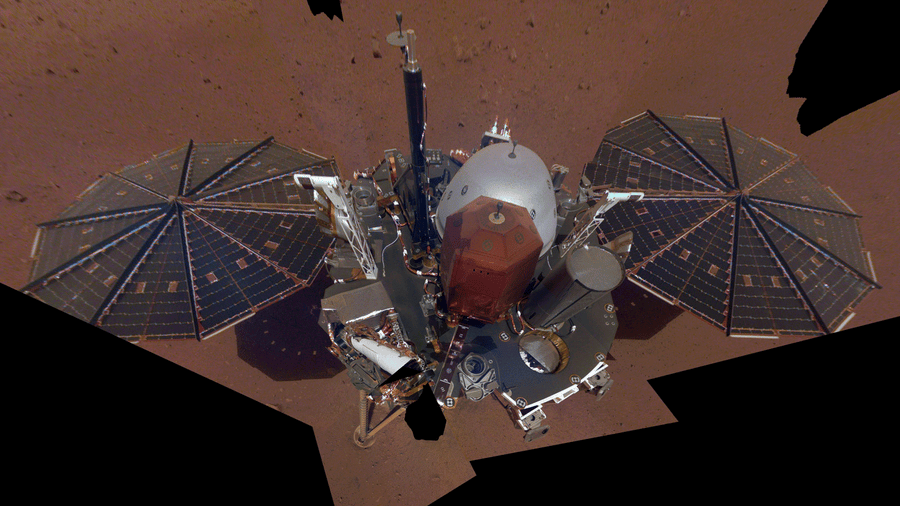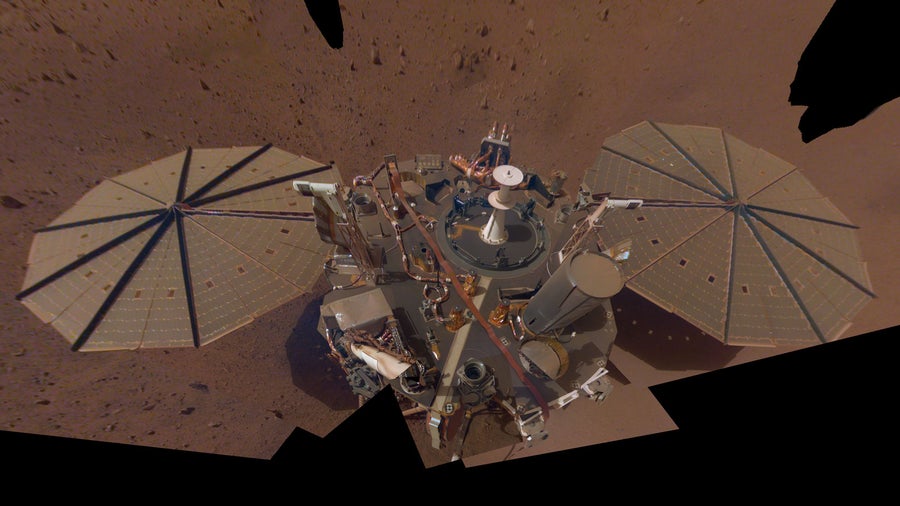This article was published in Scientific American’s former blog network and reflects the views of the author, not necessarily those of Scientific American
Mars is a dusty place. The first time humans got a probe into orbit around the planet in 1971 - the Mariner 9 mission - it had to wait weeks for a global dust storm to die down before the surface could be seen.
More recently the solar powered rovers Spirit and Opportunity not only had their light collecting capacity reduced by a coating of martian dust, they also ended up relying on the natural cleaning effects of the dust devils that whirl across Mars's surface.
NASA's Insight lander, situated at low northerly latitudes has also experienced a build-up of dust on its solar panels. We can see this clearly in a pair of 'before and after' selfie-images.
On supporting science journalism
If you're enjoying this article, consider supporting our award-winning journalism by subscribing. By purchasing a subscription you are helping to ensure the future of impactful stories about the discoveries and ideas shaping our world today.
This one was taken December 6th 2018:

Credit: NASA and JPL-Caltech
And this one taken on May 6th 2019:

Credit: NASA and JPL-Caltech
Although this coating has reduced the power captured by the lander by about 30%, that's still well within operating requirements. But naturally the mission controllers and engineers would be happier for a little natural dust-cleaning to take place.
While the lander doesn't seem to have had a very powerful dust-lifting devil pass across it yet, there has been evidence of some pickup in local winds measured by Insight's instruments and possibly a gentler bit of dust devil sweeping. Some of that increase in winds and pressure drops seem to have correlated with a few percent increase in power generation, suggesting the removal of a small amount of dust from the solar panels.
Mars has passed its northern Spring Equinox, heading for summer. While northern summer on Mars is not as hot or disruptive as the southern summer, it may well be that Insight gets its hoped for spring cleaning.